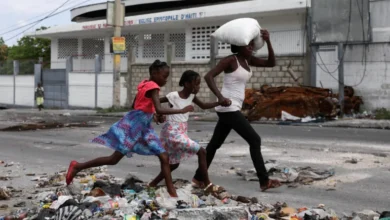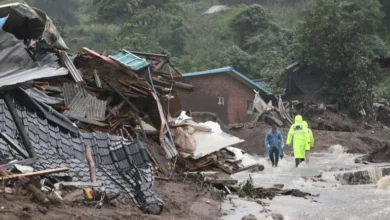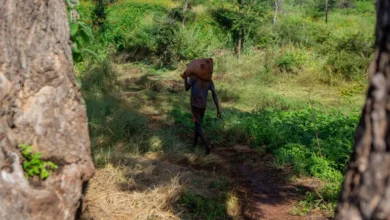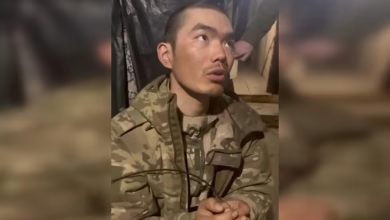Baby murderer or scapegoat? Why is the Lucy Letby case so divisive?

In a case that still shocks the United Kingdom, a 34-year-old former neonatal nurse named Lucy Letby was convicted last year of murdering seven babies in a hospital in the northeast English city of Chester and trying to murder six more.
In the six years, two trials and two appeal applications since her arrest, opinion remains fractured on whether Letby actually committed the crimes at the Countess of Chester Hospital from 2015 to 2016 that she is serving rare 15 whole-life sentences for.
The case has led to huge online speculation that the conviction was not based on reliable evidence and is a miscarriage of justice. This has caused great upset for the families of the babies she was convicted of harming.
In the meantime, an ongoing public inquiry into the deaths of the babies has started hearing evidence from parents and witnesses, some of whom said the hospital was woefully mismanaged.
On Thursday, the father of two triplet babies whom Letby was found guilty of murdering told the inquiry he had witnessed a doctor use a screen “to look up how to perform the chest drain and where the incisions and tubes should go. It looked as though they were following a tutorial and not as if they really knew what they were doing.”This week, consultant paediatrician Elizabeth Newby told the public inquiry that staff in the neonatal clinic did not come forward to raise concerns about the deaths and deterioration of babies on the ward because hospital management was too “detached” and “impersonal”.
What happened in the Letby case?
- Dr Stephen Brearey, the medical director of the hospital’s neonatal unit, raised concerns about Letby in 2015 because Letby was on shift when several deaths or collapses of babies happened. The hospital management dismissed these concerns initially, deeming them a coincidence because the causes of the deaths were different.
- In July 2016, Letby was removed from the neonatal unit and placed in the hospital’s risk and patient safety office.
- In 2017, police launched an investigation into the high infant mortality rate at the hospital. It is unknown how the hospital’s mortality rate compared with other hospitals with similar caring facilities.
- On July 3, 2018, when she was 28, Letby was first arrested at her home in Chester on suspicion of murdering eight babies and attempting to murder six others. She was not charged and was released on bail three days later pending further inquiries.
- Letby was arrested again on June 10, 2019, on the same charges and was again granted bail on June 13, pending further inquiries.
- In November 2020, she was arrested a third time, denied bail and remanded into custody. She was charged with murdering five boys and three girls from June 2015 to June 2016.
- Letby’s trial in Manchester Crown Court began in October 2022. She was found guilty in August 2023.
- In January, Letby applied to the Court of Appeal. After initially being denied the right to appeal, she was allowed a three-day hearing to apply for permission to appeal in April. However, in May, that court also refused her permission to appeal.
- In June, another trial began, at the end of which Letby was found guilty of attempting to murder another baby. She was handed another whole-life sentence on July 5.
- In her 2023 conviction, Letby was found to have attacked newborns using methods that included insulin poisoning, overfeeding through nasogastric tubes and air embolism, a blockage of blood vessels caused by air entering the circulatory system through intravenous lines or feeding tubes.
She has been jailed at the high-security Low Newton Prison in Durham. Only about 70 people are currently serving whole-life sentences in the UK.
Why is there an ongoing public inquiry?
After Letby’s conviction, a public inquiry was established to investigate the circumstances surrounding the deaths of the babies at the Countess of Chester Hospital. Lady Justice Kathryn Thirlwall of the Court of Appeal was appointed to head the inquiry in September 2023.
The hearings began on September 10 this year. Hearings of evidence by the inquiry will run for four weeks, according to a timetable published on the inquiry’s website.
Who doubts the judgement against Letby?
One person who has attracted a lot of attention is Richard Gill, a statistician and retired mathematics professor, who told Al Jazeera: “I think it’s a million to one that she’s innocent.”
In 2006, Gill became involved in the Lucia de Berk case. De Berk, a paediatric nurse who had worked at three hospitals in The Hague, Netherlands, was arrested in 2001 on suspicion of killing babies, toddlers and elderly patients by increasing doses of medicine. She was sentenced to life in prison in 2003. In 2008, however, the case was reopened, and in 2009, the court accepted that the deaths were natural and de Berk was innocent.
Gill said the Letby case is “horribly the same” as de Berk’s. “From the beginning of the Lucy Letby case, I had the impression that ‘Oh, my God! Here it goes again.’ It was just the same,” he said. He sees parallels in the cases because in both instances, an argument was made that the nurse was present when suspicious events took place, not factoring in incidents that took place in the nurse’s absence.
Why do some people believe Letby is innocent?
In short, they question the validity of some of the evidence that was used to convict Letby, including:
The statistics
The jury was shown a spreadsheet listing deaths and collapses that occurred in babies named in court as Child A through Child Q. The column under Letby’s name was fully marked with crosses, showing she was on shift on every occasion that the collapses or deaths occurred. Columns under other nurses’ names were sporadically marked, showing that no other nurse was present on every occasion.
Gill argues that there is no transparency about whether there were other incidents that occurred when Letby was not on shift. Gill told Al Jazeera: “The lie is that Lucy is there every time a suspicious event occurs. Why are those events called suspicious events? Because she’s there.”
Peter Green, a professor of statistics and a former president of the Royal Statistical Society (RSS), also took issue with the chart. “The chart appears to be very convincing, but there are a number of issues with it,” he was reported by the BBC
“That test cannot differentiate between synthetic insulin and insulin produced by the pancreas,” Wayne told the BBC in August.
“The problem is that the method of analysis used [in these two cases] was probably perfectly good from a clinical point of view but not a forensic toxicology point of view,” he said.
Letby’s defence did not question whether the test cited was the right kind of test to prove insulin poisoning.
Research cited in the air embolism allegation
The prosecution said Letby injected some of her victims with air or introduced air into their bodies through feeding tubes, which can cause air bubbles to block veins and arteries. Lead prosecution witness and retired paediatrician Dr Dewi Evans concluded this based on indicators including the discolouration, or mottling, that appeared on the skin of the affected babies.
He supported this by citing a research paper from 1989 written by Dr Shoo Lee and K Tanswell from the Lawson Research Institute at Canada’s St Joseph’s Health Centre, which concluded that such mottling was indicative of an air embolism caused by high-pressure ventilation.
as saying. “A big thing is that it only describes 25 of the bad events which happened in this period. It doesn’t include any of the events that happened when Lucy was not on duty.” In fact, there were at least six deaths and collapses of babies that were not included in the chart, according to UK media reports.
Furthermore, Green said, Letby was working extra shifts during this period and, therefore, was more likely to appear in any chart showing workers’ shifts.
The Guardian reported that a senior consultant paediatrician, Dr John Gibbs, who was a witness in both the 2022-2023 trial and the 2024 trial wrote in a July 2016 email to his co-workers that was later leaked: “The increase in neonatal mortality that we have experienced over the last 18 months might be within ‘expected’ statistical variance (but I’m not sure because my stats isn’t good enough). You might feel that this must be wrong, but it’s all to do with the statistics of small numbers.” Those who doubt Letby’s guilt say the email shows medical experts believed the numbers could be within statistical norms.
Letby’s defence did not call Lee, the surviving author of the research article, to give evidence at the original trial. However, he did testify during her appeal and gave his opinion that the discolouration described by the prosecution was not the same as what he wrote about in his research. However, his testimony was not deemed admissible by the appeals court, which concluded the defence could have called him during the trial but had not done so.
X-ray evidence related to Baby C’s death
A key piece of evidence used in Letby’s trial relating to the collapse and death of an infant referred to as Baby C was an X-ray showing a swollen stomach taken the day before the baby collapsed.
The prosecution alleged that the swollen stomach was “most likely due to deliberate” pumping of air into his feeding tube. But experts have cast doubt on this evidence.
Dr Michael Hall, a neonatologist who was consulted by the defence but was not called to give evidence, told the BBC: “There are a number of possible explanations for there being excess gas there.” He said the most likely explanation was that the swelling had been caused by the respiratory support the baby was receiving and also said the X-ray showed a possible bowel obstruction.
Crucially, Letby was not working on the day the X-ray was taken and had not been on shift since before the baby was born. While this information was given to the jury in the first trial, the judge did not remind it that Letby had not been on shift. But Letby’s former barrister Ben Myers highlighted these details in his closing argument.










